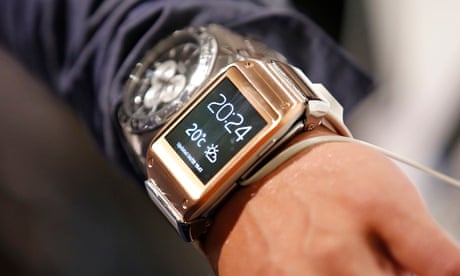As 2014 began it looked set to be "the year of wearable tech". The much-lauded (and awarded) Nike Fuelband had gained mainstream acceptance, becoming the Christmas present of choice for gadget-obsessed fitness fanatics, Samsung had launched its James Bond-style smartwatch, the Galaxy Gear, and there were rumours circulating of the launch of a similar Apple product coming soon. Meanwhile, Google Glass was finally a reality, and industry commentators were certain it would revolutionise how we interact with technology and the internet.
The idea of wearable technology is certainly tantalising. Most of us grew up watching science-fiction films that promised us jet packs, interstellar travel and robot servants. The revolutionary prospect of wearable technology gives us the opportunity to live this future now.
Clearly it's bound to be a success. Isn't it?
Well, six months on and it hasn't quite panned out that way. Nike has stopped production of the Fuelband. Ebay is awash with sellers trying to get rid of their Galaxy Gear and the public's general perception of Google Glass wearers is creepy, invasive "glassholes".
So what's gone wrong for wearable tech?
Firstly, it's not particularly wearable. Our identity is fundamentally tied to the clothes we choose and the accessories with which we adorn our bodies. The limitations of the tech element of wearable tech mean the products lack style. They don't really fit into contemporary consumers' wardrobes, so they aren't inclined to wear them often, which means they don't develop the habit of using them.
But it's not just looks that hinder the appeal of wearable tech. People just don't know what it's for, or how to use it. They don't serve any existing user need or behavioural pattern. People have been exercising for years without the need to sift through mounds of data telling them how they are performing. Regardless of how useful it can be, it's not something people generally need in their lives.
Another concern is cost and obsolescence. Wearable tech isn't cheap. Consumers don't want to spend hundreds of pounds on equipment that will be outdated and outmoded almost instantly.
Recent research from social listening provider Brandwatch reinforces this. From the 8m social mentions of wearable tech they monitored in the first six months of this year, only 8% showed any sentiment at all (6% positive to 2% negative) – suggesting that it's just not a topic on many people's radar.
The truth is that we already have the perfect piece of wearable tech: the smartphone. It's flexible to our lifestyle, discreet and can be easily customised to meet our personal style and needs. Not to mention that it's become invaluable to most people's lives.
That's why brands such as Nike have moved away from creating hardware to focus on apps such as RunKeeper, Nike+ Running and Strava Run, which offer various features to help plan and map your jog. More general exercise apps include Fitness Buddy, 7 Minute Workout Challenge and All-in Fitness.
Likewise, Fitness First is in the process of building a digital platform, including an app with around 1,000 workouts, allowing users to make their smartphones the hub of their fitness activity.
Fitness is at the forefront of this technology at the moment, but as widely predicted, it's only a matter of time before we see this shift into areas such as general health and wellbeing, as well as shopping, entertainment and other leisure activities. From the sensor-enhanced baby onesie Nursery 2.0 to the Freescale KL02 Chip, which monitors patients' organs, wearable tech is certainly showing its potential in the global marketplace. But with the costs of developing physical products weighing heavily against those of creating software for the device so many of us already own – the smartphone – it will be a while yet before we see wearable tech changing our behaviour or becoming the norm.
Currently the smartest move is to provide software that fulfils a genuine need or desire and fits with the audience's current behaviours, enabling brands to build a dependency based on established patterns of use and lifestyles. Over time this natural behaviour will become habitual, making it easier to sell new technologies. You never know, some of it might even be wearable.
Allan Blair is a strategy director at Tribal Worldwide, London
Read more stories like this:
Steve Wozniak: Samsung Galaxy Gear smartwatch is 'worthless'
Why wearables' success depends on being like Yo
To get weekly news analysis, job alerts and event notifications direct to your inbox, sign up free for Media Network membership.
All Guardian Media Network content is editorially independent except for pieces labelled 'Advertisement feature'. Find out more here.











Comments (…)
Sign in or create your Guardian account to join the discussion